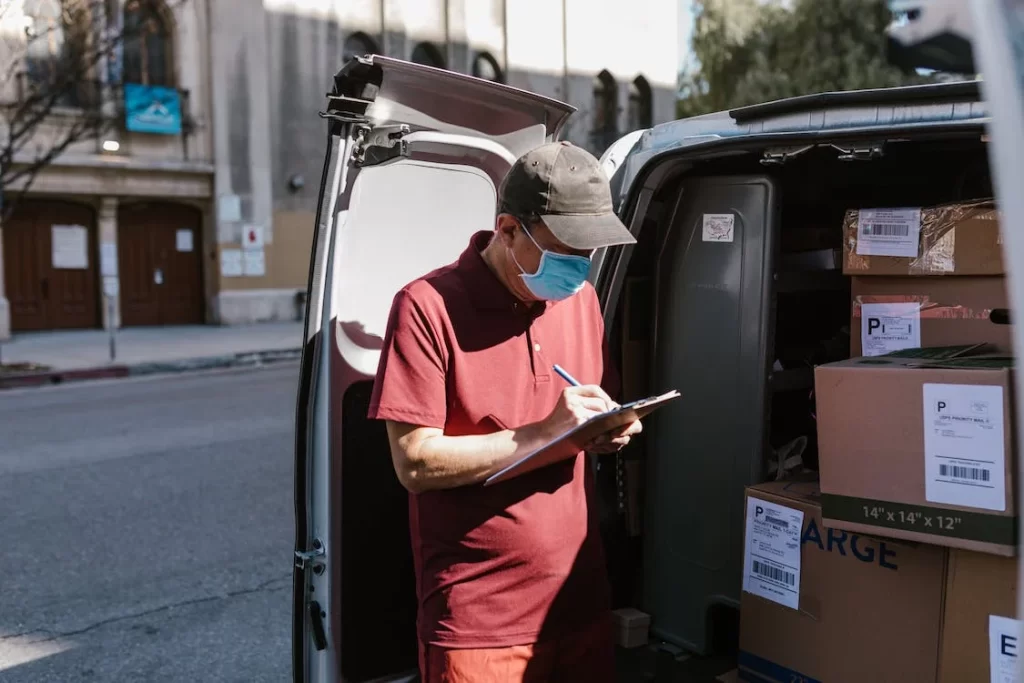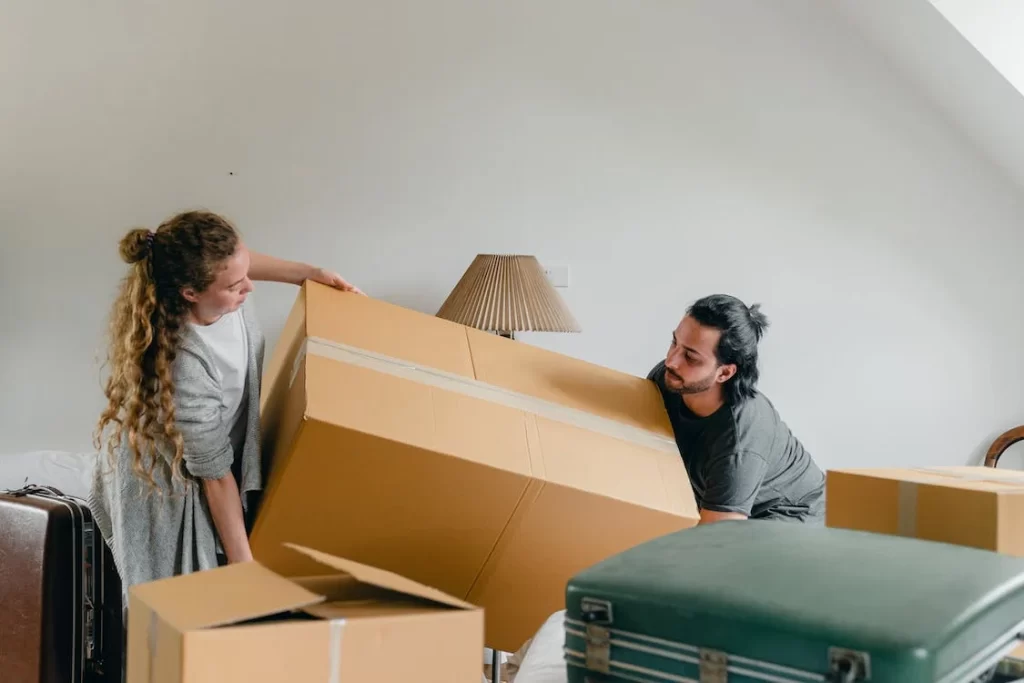Table of Contents
Embarking on a cross-country move is both an exciting adventure and a logistical challenge. Staying organized during a cross-country move is crucial for a smooth transition, minimizing stress, and ensuring everything arrives safely. This guide provides comprehensive cross-country moving tips to help you stay organized on long drives, covering everything from preparation and packing to navigating the journey and settling into your new home.
Preparation Before the Move
Before hitting the road, thorough preparation is essential. Start by researching and obtaining quotes from reputable moving companies. Create a detailed budget that includes all potential expenses. Notify important parties of your move, such as utility companies, the postal service, and any subscriptions or services you need to transfer or cancel.
Decluttering is a vital step. Sort through your belongings and donate or sell items you no longer need. This not only reduces the volume to be moved but also helps you start fresh in your new home. Gather all necessary packing supplies, including boxes, bubble wrap, and packing tape. Begin packing non-essential items well in advance to avoid last-minute stress.
- Research and obtain quotes from at least three different moving companies.
- Create a detailed budget spreadsheet to track all moving-related expenses.
- Make a checklist of all parties and services to notify about your change of address.
- Schedule donation pickups or plan a garage sale to get rid of unwanted items efficiently.
Here are some examples of tasks you should include in your preparations for the move:
Creating a Moving Checklist
A comprehensive moving checklist is an indispensable tool for staying organized. It reduces stress by ensuring you don’t overlook important tasks and provides a clear timeline for your move. Break down tasks by week, leading up to your move date, and include deadlines for specific actions.
Regularly update and adjust your checklist as needed. Include tasks like changing your address, scheduling utility disconnections and reconnections, and booking any necessary travel accommodations. A well-maintained checklist is your roadmap to a successful move.
- Utilize online templates or apps to create a customizable moving checklist.
- Assign specific tasks to family members or roommates to distribute responsibilities.
- Set reminders for important deadlines and tasks to stay on track with your timeline.
- Keep a digital and physical copy of your moving checklist for easy access and reference.

Packing Efficiently
Packing efficiently is not just about fitting your belongings into boxes; it’s about maximizing space, protecting fragile items, and ensuring everything arrives safely at your new home. Whether you’re moving across the country or across the world, mastering the art of efficient packing can make the process smoother and less stressful. In this comprehensive guide, we’ll explore tips and techniques to help you pack efficiently for your long-distance move.
1. Strategize Before You Start
Before you begin packing, take some time to strategize your approach. Assess the size and quantity of your belongings and determine the best packing materials for each item. Consider investing in quality packing materials such as sturdy boxes, bubble wrap, packing paper, and packing tape. Having the right supplies on hand will streamline the packing process and help protect your items during transit.
2. Maximize Space with Smart Packing Techniques
Space-saving techniques can make a significant difference when packing for a long-distance move. Instead of folding clothes, try rolling them to save space and prevent wrinkles. Utilize suitcases and storage bins to maximize space and protect your belongings. Pack heavier items at the bottom of boxes for stability and use smaller boxes for fragile items to prevent breakage.
3. Organize Items by Category and Priority
Organizing your belongings by category and priority will make packing and unpacking more efficient. Start by sorting items into broad categories such as clothing, kitchenware, electronics, and decorations. Then, prioritize items based on how essential they are. Pack essential items last so they are easily accessible during the move, and group similar items together to streamline the unpacking process.
4. Use Clear Bins and Labels for Easy Identification
Clear bins are a game-changer when it comes to efficient packing. Not only do they allow you to see the contents at a glance, but they also provide added protection for your items. Use clear bins for items you might need immediately upon arrival, such as toiletries and kitchen essentials. Additionally, be sure to label each box with its contents and destination room for easy identification and placement.
5. Protect Fragile Items with Quality Packing Materials
Fragile items require special care and attention during packing to ensure they arrive safely at your new home. Invest in quality packing materials such as bubble wrap, packing paper, and packing peanuts to protect fragile items during transit. Use extra padding for delicate items and double-box items for added protection. Taking the time to properly pack fragile items will help prevent damage and ensure they arrive in pristine condition.
6. Utilize Vacuum-Sealed Bags for Bulky Items
Bulky items like bedding and clothing can take up a lot of space if not packed efficiently. Utilize vacuum-sealed bags to compress bulky items and maximize space in your moving boxes. Not only will vacuum-sealed bags save space, but they will also protect your items from dust, dirt, and moisture during transit. Be sure to label vacuum-sealed bags with their contents for easy identification.
7. Take Inventory to Avoid Leaving Anything Behind
Taking inventory of your possessions as you pack is essential to ensure nothing gets left behind. Create a detailed list of all items being packed, including their condition and value. This will not only help you keep track of your belongings but also serve as a valuable reference in case of loss or damage during transit. Consider using a smartphone app or spreadsheet to keep track of your inventory for easy access.
8. Label Boxes Clearly for Easy Identification
Labeling boxes clearly is crucial for efficient packing and unpacking. Be sure to label each box with its contents and destination room using a permanent marker or adhesive labels. Use color-coded labels to distinguish between different rooms or categories, making it easier to locate specific items during unpacking. Additionally, consider including special handling instructions for fragile items to ensure they are handled with care.
Efficient packing is essential for a smooth and stress-free long-distance move. By following these tips and techniques, you can maximize space, protect your belongings, and ensure everything arrives safely at your new home. Remember to strategize before you start, organize items by category and priority, and use quality packing materials to protect fragile items. With careful planning and attention to detail, you can master the art of efficient packing and make your move a success.

Labeling and Inventory Management
Proper labeling and inventory management prevent confusion and loss during a move. Label each box with its contents and the room it belongs to. Use color-coded labels to distinguish between different rooms or categories.
Keeping an inventory of your belongings is equally important. Number your boxes and maintain a corresponding list of their contents. This not only helps in tracking items but also simplifies the unpacking process. Clearly mark fragile items to ensure they are handled with care.
- Take photos of valuable items and their condition before packing for insurance purposes.
- Create a digital inventory spreadsheet with detailed descriptions of each box’s contents.
- Store important documents, such as contracts and receipts, in a separate, easily accessible folder.
- Consider using inventory management apps to streamline the tracking process for larger moves.
Navigating Long Drives
Navigating long drives is a crucial aspect of any long-distance move. Proper planning and preparation can make the journey smoother and more enjoyable for everyone involved. In this section, we’ll explore essential tips and techniques to help you navigate long drives during your move with ease.
1. Plan Your Route in Advance
Before hitting the road, take the time to plan your route meticulously. Research and map out your journey, identifying safe and convenient rest stops along the way. Consider factors such as road conditions, weather forecasts, and traffic patterns to optimize your route. Planning for overnight stops is essential, especially for longer journeys, to ensure you’re well-rested and alert throughout the drive.
2. Stay Alert and Comfortable
Staying alert and comfortable during long drives is paramount for your safety and well-being. Take regular breaks to stretch your legs, rest your eyes, and rehydrate. Pack healthy snacks to keep your energy levels up and avoid relying on caffeine or sugary drinks. Additionally, use comfort items like pillows and blankets to make the journey more pleasant for yourself and your passengers.
3. Utilize GPS Navigation Apps
GPS navigation apps are invaluable tools for navigating long drives, especially in unfamiliar areas. Choose apps that provide real-time traffic updates and alternate route suggestions to help you avoid congestion and delays. Make sure to download maps and updates ahead of time to avoid relying on spotty internet connections while on the road.
4. Plan Entertainment Options
Keeping yourself and your passengers entertained during long drives can make the journey more enjoyable for everyone. Plan entertainment options such as audiobooks, podcasts, or games to pass the time. Consider creating themed playlists or listening to educational podcasts to make the most of your time on the road.
5. Prepare an Emergency Roadside Kit
Safety should always be a top priority when embarking on a long-distance drive. Prepare an emergency roadside kit containing essentials such as jumper cables, a first-aid kit, a flashlight, and basic tools. Familiarize yourself with how to use these items in case of an emergency, and ensure they are easily accessible within your vehicle.
6. Accommodate Pets
If you’re traveling with pets, it’s essential to plan accordingly to ensure their comfort and safety. Research pet-friendly accommodations along your route and book accommodations in advance if necessary. Pack essentials such as food, water, bedding, and toys to keep your furry friends comfortable during the journey. Additionally, plan regular rest stops to allow your pets to stretch their legs and relieve themselves.
Navigating long drives during your move doesn’t have to be daunting. With proper planning, preparation, and the right mindset, you can make the journey enjoyable and stress-free for everyone involved. Take advantage of technology, prioritize safety, and don’t forget to enjoy the scenic views along the way.

Staying Organized in Transit
Keeping your vehicle organized during the move helps maintain your sanity and ensures you can find essentials quickly. Use car organizers for small items and keep trash bags handy to maintain cleanliness. Utilize backseat and trunk organizers to maximize space.
Pack heavier items at the bottom for stability and use smaller bins for frequently accessed items. Utilizing storage solutions effectively can make a significant difference in keeping your vehicle tidy and clutter-free.
- Use car seat organizers to store snacks, drinks, and entertainment for passengers.
- Utilize storage bins with lids to keep loose items contained and prevent them from rolling around.
- Pack a separate bag with essentials like medications, chargers, and toiletries for easy access during rest stops.
- Install a roof rack or hitch cargo carrier for bulky items that won’t fit inside the vehicle.
Managing Documents and Essentials
Organizing important documents, travel itineraries, and emergency supplies is critical. Keep these items in a waterproof folder and make copies of important papers. Store essentials like medications, chargers, and snacks in a separate, easily accessible bag.
Having a designated place for important documents and essentials ensures you can quickly access them when needed, preventing unnecessary stress during your journey.
- Create digital copies of important documents and store them securely in cloud storage for backup.
- Keep a printed copy of your travel itinerary, including hotel reservations and contact information.
- Pack a small first-aid kit with bandages, pain relievers, and other basic medical supplies for emergencies.
- Store important contact numbers, such as roadside assistance and emergency services, in your phone for quick access.

Arriving at Your Destination
Upon arrival, unpacking and settling in can be overwhelming. Start by unpacking essentials like kitchen items and toiletries. Set up furniture and major appliances first to create a functional living space.
Prioritize unpacking tasks by tackling one room at a time. Use your inventory list to locate items quickly. A systematic approach to unpacking helps you get organized faster and makes your new house feel like home.
- Take photos of your new home before unpacking to document any pre-existing damage.
- Install window treatments and lighting fixtures early to create a comfortable atmosphere.
- Set up a designated area for mail and important documents to prevent clutter from accumulating.
- Explore your new neighborhood and locate essential services like grocery stores and healthcare facilities.
Post-Move Organization
Establishing routines and systems to maintain organization in your new home is crucial for a smooth transition. Set up a regular cleaning schedule and implement storage solutions to keep your space tidy.
Regularly review and donate unused items to prevent clutter from accumulating. Utilize multi-functional furniture to save space and optimize your living area. Staying organized after a move requires continuous effort but pays off in maintaining a stress-free environment.
- Invest in storage solutions like shelving units and storage ottomans to maximize space.
- Create designated zones for specific activities, such as a home office or exercise area.
- Develop a household maintenance calendar to stay on top of tasks like HVAC filter changes and gutter cleaning.
- Join local community groups or clubs to meet new people and become familiar with your surroundings.

Conclusion
Staying organized during a cross-country move is essential for reducing stress and ensuring a smooth transition. By following these cross-country moving tips, you can tackle the challenges of long drives and settling into a new home with ease. Share your moving tips and experiences in the comments below – we’d love to hear from you!
Relocate Stress-Free with 680 Movers
Are you planning a cross-country move and feeling overwhelmed by the logistics? Look no further than 680 Movers for a stress-free relocation experience. Our team of professional movers is dedicated to ensuring your move is smooth, efficient, and hassle-free.
With years of experience in the moving industry, 680 Movers understands the challenges of long-distance moves and is equipped to handle every aspect of your relocation with care and expertise. Whether you’re moving to a new state for a job opportunity, seeking a fresh start in a different city, or relocating your family for personal reasons, we’re here to make the transition as seamless as possible.
At 680 Movers, we prioritize customer satisfaction and go above and beyond to meet your specific needs and preferences. From packing and loading to transportation and unpacking, our skilled movers will handle every step of the moving process with professionalism and attention to detail. You can trust us to treat your belongings with the utmost care and respect, ensuring they arrive safely at your new home.
Why stress over the logistics of your cross-country move when you can leave it to the experts at 680 Movers? Let us take the burden off your shoulders so you can focus on the excitement of starting a new chapter in your life. Contact us today to learn more about our services and request a quote for your upcoming move. With 680 Movers by your side, you can relocate with confidence and peace of mind.